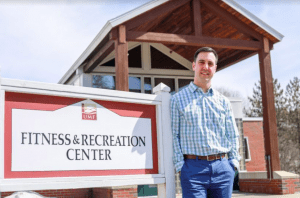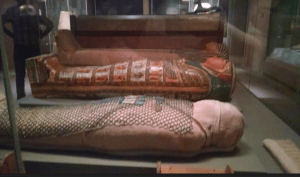
Dec 8, 2020 | Feature, TopStory |
You happen upon a tiny frog who grants tiny wishes. The frog informs you that you cannot wish for big things, like money, love, or power, or wishes that will benefit a population. What do you wish for? -Freckles the Flyer Frog

Freckles the Flyer Frog
By Faith Rouillard and Malcolm Langner:
– A restful night sleep
– A pencil that never goes missing
– A shower that never gets cold
– A full fridge without going grocery shopping
– Flawless internet while on Zoom
– A clone to attend Zoom classes
– A phone that never dies
– A white and sunny Christmas
– White shoes that never get dirty
– A coffee table that won’t slide away from your feet
– Getting into shape without having to exercise
– No ads on games or TV
– Never getting toothpaste on your clothes again
By Portia Hardy:
– Jeans that fit perfectly
– An electronic charger that works on any device
– A never-ending jug of pure maple syrup
By Emma Pierce:
– A bedroom that cleans itself
– Paper mâché that dries quickly
– Glasses that don’t smudge
Apr 20, 2020 | Feature |
Darby Murnane, Editor-In-Chief
Dearest readers,
We close out the year with the spring’s final issue of the Farmington Flyer. As with the previous issue, we are still solely online with our contributing writers and reporters scattered across Maine and the U.S. Our stories in this issue continue to look outward from the UMF campus and cover a greater range of material from as many regions as our writers reside.
It is strange not to be holding the final issue in my hands, not to be writing these words on campus but rather from six states away. This is certainly not the proper ending to my time on Flyer that I had imagined, but so very few endings ever feel right and proper. So I will take what I have and make of it what I can.
Though this may be an ending for me, it is a beginning for the new staff who will be taking the reins on the paper for the year to come. I’d like to introduce Portia Hardy and Colin Harris as the new Editor in Chief and Assistant Editor. The current Assistant Editor and Secretary Emma Pierce will be guiding the new staff into their roles with her experience and expertise, as well her unending patience from dealing with me.
And to Portia and Colin, I offer you some advice that hopefully can be construed as wisdom and thoughts to keep with you as you take this paper and make it your own: This is the time to practice looking at the world with a more piercing gaze than you would’ve looked with before. There is always another layer to a story, another question to ask, another perspective to seek, another angle to consider. Pay attention to the story itself- this might sound silly, what else would you be paying attention to? But sometimes the story knows how it wants to be told, how it needs to be told, and if you don’t pay attention, you run the risk of telling it wrong as some stories require a specific form and voice. You will miss things- constantly. But don’t be afraid of that. Learn to ask yourself, “What am I missing? How do I find it?” Ask for help. This is not a job done alone, and should never be. I would never have survived without my fellow editors and relied daily on the support of their teamwork. And beyond even the staff, remember that this job is done with the help of those who agree to talk to you. Never forget your sources and the favor they have done you by donating their time and voices. Remember your empathy. If you don’t have an honest connection to your sources, if you don’t earn their trust, you have nothing. If a story of some sensitivity and weight lands on your desk, your every decision should be made with respect, dignity, and care. Not every detail, not every piece of a person, is meant for a larger audience.
Remember your grit, your resilience, your spine. It is your job in your reporting to maintain accountability and transparency. It’s your job to ensure nothing stays hidden or swept under the rug. But sometimes doing that job will start a fire. Even a small student paper like ours can, and has, sparked change. There will be days when it feels like everyone and their grandmother is coming after you. And it may induce the urge to throttle someone. Resist the urge, I beg you. And listen. Has there been a mistake? If so, how do you fix it? If you can swear up and down that you’ve done everything right, you may very well feel a wave of righteous anger, a sense of how dare you, and feel as though you should express all those feelings in the strongest possible terms. Don’t. If you can, wait 24 hours to collect yourself. If you can’t wait and an immediate response is required, never underestimate the power of asking “Can you tell me about your concerns?” It’s when you refuse to listen that a real problem will arise.
An editorial position is a lot to take on and I will not hide that from you. Just take it one story, one issue at a time and have mercy on yourself.
And to you, dear readers, be gentle. A student newspaper staff is perpetually in the learning curve as roles change hands every year. But still, hold us accountable as we hope to hold the community accountable. We will never continue to grow if our faults are hidden from us.
Thank you for your time, your voices, and your stories. Until we meet again.
Goodnight and Good News,
Darby Murnane, Editor-In-Chief 2019-2020

May 3, 2019 | News |

Ben White, the newest addition to the FRC, has plans to run it more efficiently. (Photo courtesy of UMF Website)
Contributing Writer
As I walked into the FRC, Ben White, the new director of the FRC, greeted me with a smile, walked to the front doors, and turned to face the lobby and its commotion. After he told me he was “analyzing the visual appeal of the lobby area,” he asked me to stand next to him and observe the lobby. “What do you notice visually?” White asked.
I instantly felt like I could be honest with him because of our common desire to be actively involved in change. I told him there was empty space. After asking an FRC student employee the same question, White concluded that there was so much empty space on the walls that all you could do was focus on the empty space. He wants to use his prior knowledge and current expectations of the FRC to leave an impression on its visitors the moment they walk in.
White started working as the FRC Director just over a month ago, and is responsible for the Fitness and Recreation Department: from staff to programming to FRC memberships, as well as Mainely Outdoors. He will be filling the shoes of the previous Director and founder of Mainely Outdoors, Jim Toner, who passed away last summer.
He has a lot of new, productive ideas for the FRC— including program additions and a deeper relationship between the FRC and campus wellness— but he’d like to focus on student staff development to better prepare student staff for graduate school or the workforce. “Having been at other schools and working with people and schools all over the country,” White said, “I’ve seen some student staff development programs that provide more leadership [and] graduate school opportunities to student staff.”
White made it clear that he’s not expecting to enact major changes. “There are, and have been, so many amazing things happening by the staff that’s already there,” said White. “I don’t feel like I need to come in and be like, ‘Alright, we need to do these things.’ They’re already happening.”
Heather McDonald, a senior Special Education and Psychology double major as well as an FRC lifeguard and swim instructor, has been impressed with White and what he’s done so far. “His openness towards learning the environment and the people involved in the facility was a great relief,” said McDonald in an online interview. “Since we had built our own flow and daily routine, it made [the staff] much more receptive towards him, knowing that we wouldn’t have to change what we already know.”
Leah Brackett, one of the assistant directors at the FRC, was equally impressed after talking to White about his new ideas, such as the possibility of using DSE Rec software at the FRC’s front desk. “He’s met lots of people, so he has resources all over the country to help us improve our practices,” said Brackett.
White is more than qualified for his new position, and he and the staff are ready for his leadership. “Jim Toner’s passing left a large space in our FRC community and environment, which also left a certain level of expectation to fulfil,” said McDonald. “But I have no doubts that Ben will not only fulfil those expectations, but will bring his own element and legacy to the FRC.”

Apr 19, 2019 | News |
By Audrey Carroll Contributing Writer

The museum not only focused on modern art– it also focused on ancient artifacts, too. (Photo by Emily Mokler)
Recently, Associate Professor of Art History and UMF Gallery Director Sarah Maline brought her Contemporary Art class, her World Film class and guests to the Museum of Fine Arts (MFA) in Boston, MA. Entrance fees to the museum had been generously paid by a donor for Maine students and accompanying faculty.
Emma Pierce, a sophomore Visual Arts major and Graphic Design minor, felt as though the time flew by. “That museum is so big that you can get lost in it,” said Pierce.
Similarly, Emily Mokler, a senior Creative Writing major, and a guest on the trip was astounded by the vastness of the museum. “You could easily spend a couple of days in there, and still not see everything— it was that big,” said Mokler. “I feel like I saw maybe 10 percent of the place.”
Since the MFA is so large, it occupies artworks of all kinds. This ensures that any attendee is likely to find

This designer look has broken the boundaries of gender through fashion. (Photo by Emma Pierce)
an exhibit or a specific piece of artwork that captivates them. For Mokler, this exhibit was that of the Egyptian mummies. “There was this climate controlled room, where they had different mummies from ancient Egypt,” said Mokler, “and they had hieroglyphs from the tombs. . .They structured these rooms so that you could see them laid out, and you could still see the colors— you know, some red and some blue.”
For Pierce, the piece that captivated her was “The Postman” by Vincent Van Gogh. “First of all, Van Gogh is my man,” said Pierce. What struck her about “The Postman” is how one can see the paint coming off of the original canvas. “Because he used a lot of paint… it gives it [the painting] texture, and it also shows where he put the brush— which is surreal,” said Pierce. “It’s almost like you were there with him.”
Pierce’s acknowledgement of the details of the artwork at the MFA, details that one can only witness in person, is exactly why Professor Maline takes this trip with her classes every semester. “The MFA offers us a chance to experience ‘live art,’” said Professor Maline via email, “The opportunity to experience live art— in your own physical presence— is so important. Very different from seeing it onscreen or projected. You see scale, texture and color in a different way.”
Though the trip is always a fun success, Professor Maline often experiences a moment of anxiousness during the outing. “We always have one student lost— either at the MFA at closing time or at Quincy Market after dinner— thank goodness for cell phones,” said Maline, “20 years ago when I first ran this trip we didn’t all have cells, so it was very stressful.”
Upon returning home from the MFA, Professor Maline’s students will complete a critical analysis paper of an artwork that they viewed on the trip. For this assignment, students “describe [an artwork] very closely, analyze it, then compare it to another artwork that is related conceptually— though not necessarily culturally or temporally,” said Maline.
Pierce is writing her analysis essay on a piece from the exhibit “A Gender Bending Fashion Show.” This exhibit displayed geometrically oriented neon lights surrounding outfits created by a variety of designers that “challenge the rigid definitions of dress based on gender,” said Pierce. This piece was designed by Viktor&Rolf for Tilda Swinton— an actress who “has a gender non-conforming style,” said Pierce.
This trip is a fun and educational experience for all, especially for the students in Professor Maline’s classes. “I recommend this trip to the patient and the open-minded,” said Pierce, “I would recommend it if you’re willing to experience art in the most open way— otherwise you won’t be able to enjoy it as much.”
Even for guests, exploring the MFA and Quincy Market was interesting and relevant. The excursion to Boston alone offered a different atmosphere for students to escape to. “This trip is great if you want to experience a change of pace,” said Mokler.
The trip to the MFA is taken once a semester. To attend, a student may either enroll in a class taught by Professor Maline or pay a $30 travel fee at the Student Life office on campus to attend as a guest.
Apr 5, 2019 | News |
By Emma Pierce Contributing Writer
On a windy day in early March, walking to class at the FRC seems worse than the class itself. The cold wind hitting my face is so strong that my eyes are forced half-closed so they don’t dry. As I pass FAB Hall on Lincoln Street, I remember that the sidewalk ends here and doesn’t continue until I get to the FRC. I stop at the sharp corner, the ramp to the Public Safety building blocking my view of any potential oncoming cars making me uneasy. I decide there’s nothing else I can do. I look both ways and even though I don’t see any cars coming, a silver sedan swings around the corner out of nowhere and narrowly misses me as I dart across the street, honking at me as it drives by.
I’m not the only student who has had a near-accident at the corner of Quebec and Lincoln Streets. In fact, a student almost got hit on March 27. As the student was walking towards the Honors House side of Lincoln Street on their way to work, a car with a faculty decal came fast around the corner, drifting onto the sidewalk and forcing the student to step onto the grass to ensure the car wouldn’t get close enough to hit them.
“The corner is regularly a difficult place to walk, in that there is no real safe space to walk, and it is not uncommon for cars to come through without slowing down for potential pedestrians,” said the student in an online statement.
The worst time to brave this corner is in the winter, when the snowbanks stand at almost 10 feet tall. With the ramp of the Public Safety building and the snowbanks obstructing the view of the pedestrian as well as an oncoming vehicle, there’s no way to tell when a car is coming until it comes around the corner. Talking to friends, faculty, and classmates at UMF about this corner has brought up concerns of fear. Does the university know about the dangers of this corner? What can we do to avoid this potential tragedy?
UMF knows this corner is a danger to its students and they are currently going through the process to get a plan approved. The plan? To create a system to safely allow pedestrians to get around the corner and slow cars down to make them aware of oncoming pedestrians.
Jeff McKay, director of Facilities Management, has been working with the town of Farmington in hopes that they will approve a plan that would widen the sidewalks along Lincoln Street, and allow Farmington Public Works to make new sidewalks along the corner and Quebec Street. “There is no sidewalk on [the Public Safety building] side of the street on [the] corner,” said McKay, “so it would be nice to continue that up around by the volleyball court then down Perkins Street [across from the Mainely Outdoors building].”
Since the town of Farmington owns the streets that go through UMF, any work on those streets has to be approved by the town. This can slow down the work process and if the town doesn’t approve it, it could shut down the whole project. Even if the proposed added sidewalk doesn’t pass, McKay will be inserting more lighting in front of the Public Safety building, which isn’t the best solution, but it’s certainly not the worst.
Inserting a crosswalk between the end of the sidewalk on Lincoln Street and the beginning of the sidewalk in front of the FRC could be a good solution if this wasn’t an illegal place to put a crosswalk. According to the MaineDOT Guidelines On Crosswalks, in a 25 mph zone such as that on Quebec and Lincoln Streets, the crosswalk must be in view of the driver and the pedestrian from at least 200 ft. away. By that standard, a driver or pedestrian coming from Quebec Street would have to be able to see the crosswalk around the corner from the Mainely Outdoors building.
Sergeant Wayne Drake of Campus Police and I discussed his ideal resolution from outside the Public Safety building, the corner in question in out view. “The only way to fix this corner,” Drake said, “is to cut out the corner, bypass it.” Promised by the previous director of Facilities, according to Drake, was the installation of stairs on the bank right before the end of the sidewalk on Lincoln Street. These steps would lead to a path cutting through the field next to the volleyball court and ending in a crosswalk on Quebec Street. Drake says the town of Farmington would be most concerned legally about liability when looking at the stairs plan, but he doesn’t believe that will be much of a factor.




